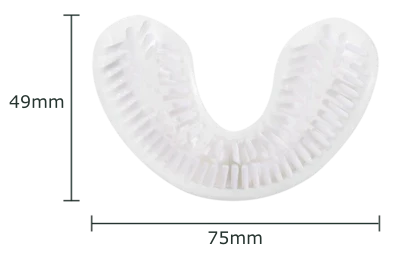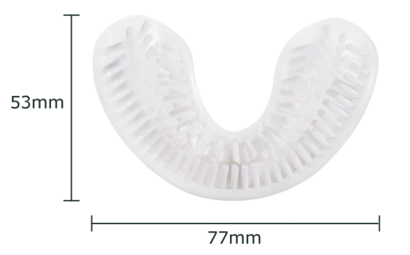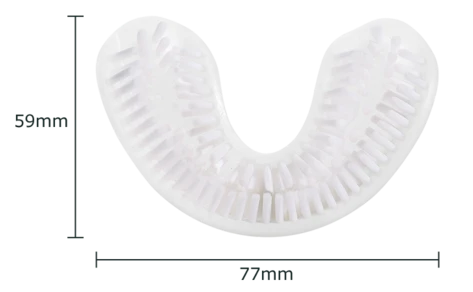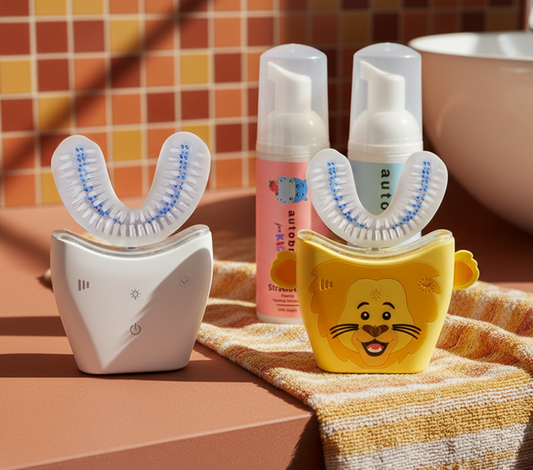
Dental Retainers: What You Need to Know
A healthy smile is essential to both your body and your self-esteem. That is why it is important to look after your teeth. However, crooked or misaligned teeth are quite common in many children and adults. According to Scientific American’s article, nine out of ten people have teeth that are slightly misaligned or crooked. So, if you or a family member has crooked teeth, don't worry; it's totally common and importantly, it can be fixed. With how common crooked teeth are, many teeth straightening procedures are now available. One of the most popular treatments is dental braces.
According to Humana, over 4 million people in the United States wear dental braces, with 25% of them being adults. Following teeth straightening treatments such as braces, your teeth must be kept in place by wearing a dental retainer. They're a detachable or fixed device that keeps your teeth from reverting to their original position when your braces are removed. They keep teeth in place following orthodontic treatment while allowing the bone that holds the teeth in place to recover.
Teeth retainers are very important for maintaining your teeth straight, aligned, and healthy in the long run. This article will show you everything there is to know about dental retainers.
Types of Dental Retainers

There are two main types of dental retainers and your dentist will assist you in determining which type is appropriate for you based on your needs and dental conditions.
Removable Dental Retainers
Removable retainers are designed to cover the entire top and bottom arches of your teeth. It has the advantage of being removable for eating and cleaning. Most dentists utilize removable retainers to protect your teeth from nightly bruxism, which is when you grind your teeth while sleeping.
There are two types of removable retainers available:
- Hawley Retainer: A wire wraps around the teeth and connects to a plastic arch that sits on the roof of the mouth to keep it in place. It features stainless steel wires that can be changed at any moment if necessary to achieve slight front tooth movement.
- Essix Retainers: Also known as clear plastic retainers, made up of a clear plastic material that should perfectly fit over your teeth. It is molded to your mouth's particular shape and is far less visible than Hawley wire retainers. Its goal is to keep your teeth straight and aligned.
Permanent Dental Retainers
Permanent dental retainers are also known as fixed or bonded retainers. You cannot remove these types of dental retainers and the only one who can remove them is an orthodontist. Permanent retainers are bonded to the backs of your teeth. Depending on the situation of your teeth, permanent dental retainers can be used on either the lower or upper front teeth. This form of retainer secures the teeth in place, preventing them from shifting back into their original locations.
How Do Dental Retainers Work?

After your braces are removed, your bones may need some time to adjust to the new form and shape of your mouth. Your teeth will need something to keep everything stable while also progressively moving to match straighter and aligned teeth. That specific something is no other than the dental retainers.
Teeth must be reminded of their new place regularly, that’s why dental retainers are essential for the effectiveness of your orthodontic treatment since movement might occur before you even realize it. Dental retainers are made to highly precise dimensions based on the shape of your mouth. Dental retainers work to maintain your new look; designed to leave no space for slipping back after braces are removed.
How to Care for Dental Retainers

Dental retainers should be treated as you would treat your natural teeth. Because your retainer spends so much time in your mouth, it is exposed and vulnerable to all of the bacteria, plaque, and food particles that collect inside your mouth.
Taking care of retainers may appear to be a daunting task. There are, however, simple steps you can take to make sure your retainer is well-maintained.
Secure Your Dental Retainer
For removable dental retainers, the most important thing to keep in mind is that it doesn't get misplaced or destroyed. This may seem simple, but when you use something every day, it's easy to ignore little details.
Here are some things you can do to make sure your dental retainer is safe and secure:
- Bring your dental retainer case along with you.
- Keep your retainer out of the sun or heat.
- Keep your retainer out of reach of kids and animals.
- Keep your retainer out of your pocket.
You can ask your family to help in reminding you about your retainers and vice versa if they also have retainers. Teamwork will make it easier for you and your family to secure your dental retainers.
Avoid Foods That Can Harm Your Retainer
If you have removable retainers, take them out before eating. However, if your retainers are fixed, it's critical to watch what you eat because some foods can harm them.
If you have permanent retainers, you should avoid the following foods:
- Chewing gum
- Sticky or hard candies
- Nuts
- Ice
- Popcorn
- Tough and chewy foods like beef jerky
If you have a family member who wears dental retainers, be aware of these foods and avoid buying or serving them. Additionally, constantly remind them to avoid these types of foods.
Always Attend Follow-up Dental Appointments
Every follow-up appointment with the dentist includes checking the retainer to ensure that nothing is missed and that there are no issues with the retainer. Your orthodontist will examine your dental retainers to see if they are in good condition or if they need to be adjusted. As a result, it's critical to attend follow-up visits to ensure that your dental retainers are well-maintained.
Properly Clean Your Retainers Daily
Retainers, like your natural teeth, require daily cleaning. This helps with hygiene, oral health, and fresh breath. After each meal, rinse to reduce odor and plaque build-up, and always floss your teeth. If you have permanent dental retainers, you can use floss threaders. You can also gargle warm water or with a mouthwash if you’re using a permanent retainer.
How to Clean Dental Retainers

The type of dental retainer you have will determine how to clean it effectively. Cleaning your retainers will be easier if they are removable. However, there are also effective steps for cleaning permanent retainers.
How to clean removable dental retainers:
- After each meal, brush your dental retainer and rinse it with lukewarm water. It is recommended to use a soft-bristled toothbrush and non-whitening toothpaste. Make sure you brush your teeth as well.
- For deeper cleaning, clean your dental retainer with a soft toothbrush using mild dish soap. Scrub the retainer both inside and out. Deep cleaning of your dental retainers should be done with a new or separate toothbrush. Before putting it back on your teeth, properly rinse it with warm water.
- Clean with baking soda. Baking soda is a non-toxic disinfectant that can be used for a variety of purposes. Make a paste using baking soda and a little water. The consistency of the mixture must be thick enough just to adhere to the retainer. The retainer can then be carefully scrubbed with the mixture and a soft toothbrush. Always rinse with lukewarm water.
- Clean retainers with vinegar. White vinegar is a mild disinfectant that can be used to get rid of odors and residues. Make a combination of white vinegar and warm water in a glass or bowl. After that, soak the retainer in the mixture for 20 minutes. After soaking, rinse the retainer thoroughly with lukewarm water.
🦷️ Toothy Tip: Although using baking soda and vinegar to clean most types of retainers is safe, you should always check with your dentist to see if it is okay to do so.
How to clean permanent dental retainers:
- Brush your teeth at least twice a day with the permanent retainer. Brush around your permanent retainer gently using a soft toothbrush to remove any food or debris that is trapped. Always gargle properly with lukewarm water after brushing.
- Use a floss threader to floss your permanent retainer every day. Move the floss up and down between the teeth once you've got it under the retainer wire. The floss should thoroughly clean all the debris below the gum line. Gargle with lukewarm after flossing.
- Regularly visit your dentist. A dentist can carefully remove all the debris and even bacteria that are tough to remove on your own.
How Much Does a Dental Retainer Typically Cost?
A dental retainer's cost will depend on what type of retainers, the condition of your teeth, and the dental clinic where you’d get the retainer. According to Health Line, a permanent dental retainer can initially cost around $225 to $550 for one arch, top or bottom, and $150 to $340 for one removable dental retainer.
If you lose or break your retainer, the cost of replacing dental retainers also varies. A replacement for removable retainers will cost between $100 and $300, while a replacement for permanent retainers will cost between $250 and $500.
Conclusion
A retainer keeps your teeth straight and ensures the finest long-term outcomes of the beauty of your smile. If you or a member of your family is concerned about your dental health, your dentist will be able to determine the best treatment and retainer for you. We hope that this article has provided you with the information you require regarding dental retainers and that you and your family are on the way to a healthy smile that will last a lifetime.












